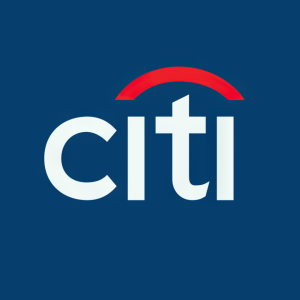[FWP] Citigroup Inc. Free Writing Prospectus
Citigroup Global Markets Holdings Inc., guaranteed by Citigroup Inc., is marketing 5-year Autocallable Contingent Coupon Securities linked to the worst performance of the Dow Jones Industrial Average (INDU) and the S&P 500 Dynamic Participation Index (SPXDPU1). The notes have a $1,000 stated principal amount, price July 7 2025 and mature July 11 2030, with monthly valuation and potential early redemption dates beginning after one year.
Income potential: Investors may receive a 7.00% p.a. coupon, paid monthly, but only if the worst-performing index closes at or above 80 % of its initial level (coupon barrier) on the relevant valuation date. Missed coupons are not recoverable.
Autocall feature: If, on any monthly valuation date after year one, the worst performer is at or above its initial level, the notes are automatically called at $1,000 plus the current coupon. Hypothetical tables show that even a 0% to +100% “worst underlying return” would trigger redemption at $1,005.833 (principal + one coupon).
Principal risk & buffer: At maturity, if the securities have not been called and the worst performer is ≥ 85 % of its initial value, holders receive full principal. Below that 15 % buffer, repayment equals $1,000 plus index return plus 15 %, exposing investors to 1 % downside for every 1 % drop beyond the buffer (e.g., –50 % return ⇒ $650; –100 % ⇒ $150).
Key risks: • Possibility of significant principal loss • Non-guaranteed coupons • “Worst-of” dual-index structure increases probability of loss • No secondary-market listing • Credit risk of Citigroup Global Markets Holdings Inc. and Citigroup Inc. • Estimated value will be below issue price; bid/offer spreads may be wide.
The securities are offered under Citigroup’s shelf registration (File Nos. 333-270327 & 333-270327-01) via a preliminary pricing supplement dated June 20 2025. Investors should review that document and associated supplements for full terms and risk disclosures before investing.
- 7.00% contingent annual coupon offers income potential above current short-term rates, payable monthly if barrier is met.
- 15% downside buffer provides limited protection against moderate market declines at maturity.
- Monthly autocall feature can return principal early, reducing duration risk and locking in coupons if indices perform.
- Principal at risk; a decline of more than 15% in the worst index at maturity leads to 1-for-1 losses beyond the buffer.
- No upside participation; maximum return is limited to coupons and par, even if indices rally substantially.
- Dual-index "worst-of" structure increases likelihood that at least one index breaches barriers, cancelling coupons or causing loss.
- Unlisted security may suffer illiquidity and wide bid/offer spreads; investors may be unable to exit early.
- Estimated value below issue price implies negative mark-to-market immediately after pricing.
Insights
TL;DR Risky "worst-of" autocall note: 7% coupon only if both indices hold above 80%; 15% buffer, potential large principal loss.
Analysis: The note offers mid-single-digit income in the current rate environment but compensates with substantial contingent risk. The 80% coupon barrier and 85% final buffer are relatively tight versus historical drawdowns for INDU and synthetic SPXDPU1. Probability modelling shows coupons cease in moderate corrections (≈10-20%) and principal losses begin beyond a 15% worst-index decline at maturity. Early redemption after year one reduces duration but also caps upside at par. From Citi’s standpoint the issue is routine funding; from an investor standpoint it is a leveraged, path-dependent exposure with asymmetric payoff skewed negative. Overall market impact is minimal, so I assign a neutral impact rating.
TL;DR Credit risk secondary; main hazard is market performance. Citi’s IG ratings limit default risk, but note value still hinges on issuer solvency.
The securities carry Citigroup Inc. senior unsecured credit exposure for five years. Citi remains investment-grade (S&P: BBB+), so default probability is low, yet non-zero. Because coupons and principal are not asset-backed, distress could leave investors with recovery values far below par regardless of index performance. Citi’s liquidity profile suggests adequate coverage, but investors must price the small yet finite tail-risk. Given Citi’s $2 tn balance sheet, the issuance is immaterial to its capital structure; impact on the company is negligible, impact on investors hinges on personal risk appetite.








